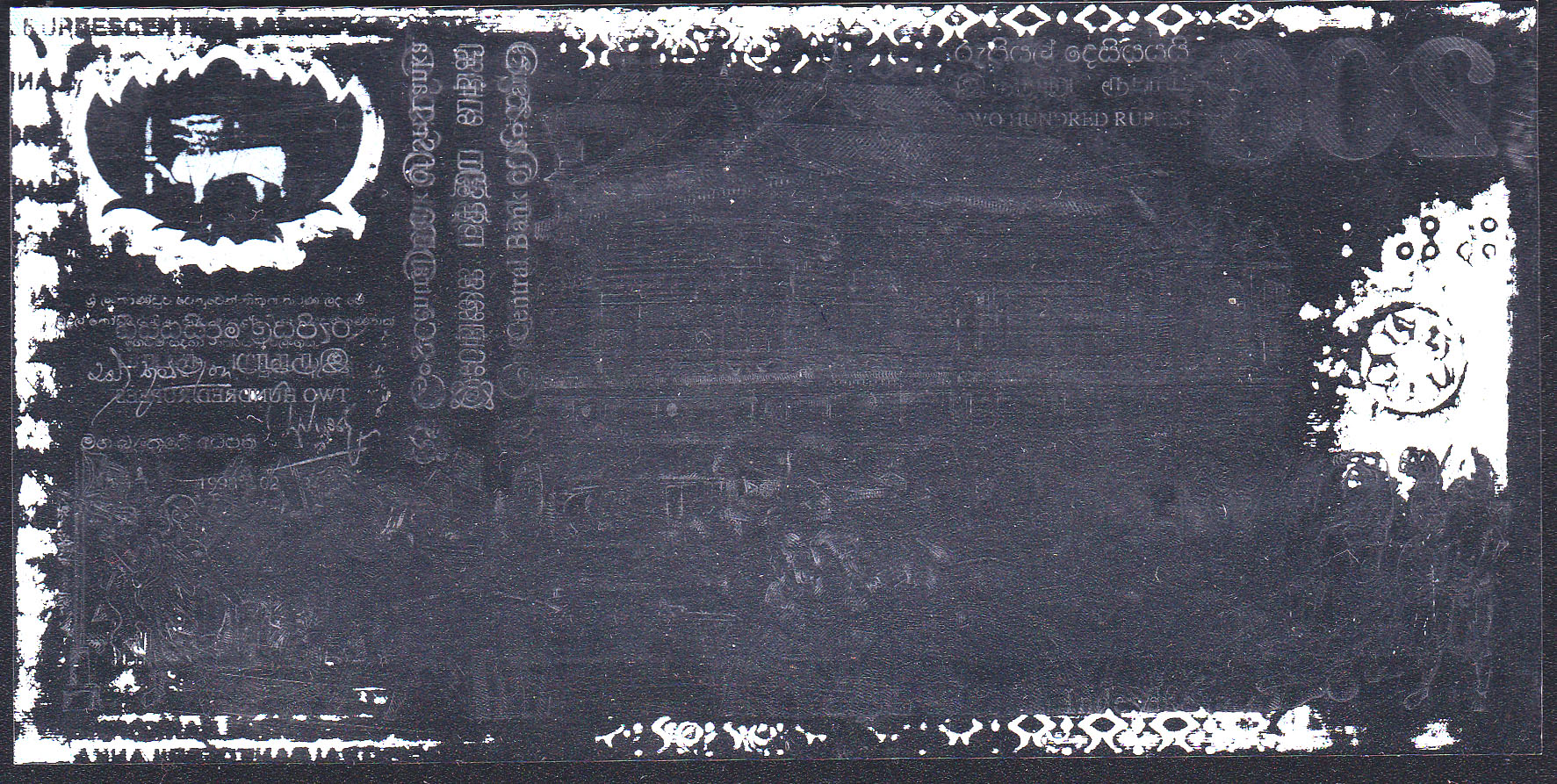
In 2016 after the new British Polymer £5 banknote was issued it was reported that as the polymer substrate is strong, the ink can easily be erased. YouTube Video illustrated how it is done.
A spokesman for DeLaRue said that notes would not normally lose their ink, and insisted that Banknote had been subjected to "excessive and abnormal ink wear. Whilst ink wear is the ultimate failure mode of polymer banknotes in circulation, the ink wear displayed here appears to us to have been achieved by a method not representative of what happens to a banknote under normal circulation conditions."
In 2020 I noticed a pair of Sri Lanka 1998 Rs200 polymer Banknotes with the back of one banknote missing been sold on eBay Auction as an error note for $1000. At the same time there were UK £5 notes with the Queen's image erased also on sale on eBay. Collector Shehan Patterson informed me how the ink is simpler to remove than with an eraser.
Front: Polymer Note with most of both the front and the back erased on a black background which shows through the transparent banknote.

A faint but sharp impression of both sides of the original print on the polymer is clearly visible and has been highlighted with PhotoShop in this image.
Residual of the white base ink layer remains on both sides of image above and was not removed because it shows some of the hidden printing like the 200 RUPEES CENTRAL BANK OF SRI LANKA on the upper and it's mirror on lower edge on the left and some decorative motifs to the right of it on this image, Also some bars on left edge. These are also partly visible on the printed note if you know where to look. I was not careful of the lion which I thought was embedded in the polymer and found that too got partly erased in the cleaning process.
I quote Email from Stan Straus of polymernotes.org The faint impression that is seen imprinted in the substrate comes from the intaglio printing plate, which is an engraved (recessed) plate that hits the substrate with considerable force and deposits intaglio ink (raised ink) on the surface.
The lion is created by adding a layer of white (opacifying) ink on top of the transparent polymer film (this is done by the substrate manufacturer, not by the printer). It is the same white layer that is found on the rest of the note (with the exception of the clear part of the window) and which enables other print layers to be added on top.
There have been claims of a Genuine Error note with no back printing. Such a note would need to be carefully inspected to ensure the intaglio impression of the back print is not visible. If visible it has just been erased like above.
Banknote was scanned at 300 dpi and displayed at 100 dpi